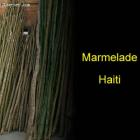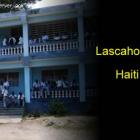ADVERTISEMENT
History - Haiti Observer Blog
History, Haiti Observer Blog. Read the following articles about History
Restoration of Palace of 365 Doors in Petite-Riviere, Artibonite
Aid-donor agency Petrocaribe has dispensed funding dollars to begin restoration work on Palace of 365 Doors in Petite-Riviere, Artibonite, part of Artibonite North Department. The Palace was designed by architect Louis Dupeyrac as a presidential home for King Henri Christophe in 1820. Christophe commissioned the project because he wanted a potent symbol of his dominance over the abundant and verdant agricultural lands of the Artibonite plains. For unknown reasons the palace was never completed.
Over a century later, the abandoned building had deteriorated significantly. Under President Stenio Vincent, funds were allocated to restore Palace of 365 Doors in Petite-Riviere, Artibonite. Restoration work included laying corrugated steel floors, spreading a layer of cement over its exterior surface, and covering windows with wood shutters. Not a true restoration, it was done to stop any further deterioration and shield it from the elements.
Roots of Liberty: The Haitian Revolution and the American Civil War, Danny Glover
Great news for stage film buffs! Danny Glover is all set to play the character of the revolutionary Toussaint L'ouverture. For those who do not know about Toussaint L'ouverture, he was a shrewd and a military genius and was the mastermind behind the Haitian Revolution. His act of bravery and intelligence during the revolution is what is believed to have established the independent black state of Haiti and completely abolished slavery.
Danny Glover will star as Toussaint L'ouverture in "Roots of Liberty: The Haitian Revolution and American Civil War". Danny has been working on this film for quite some time and is very excited to have finally nailed down the script and get it off the blocks. This has got a lot of people excited in the stage pageant arena. Director Megan Sandberg-Zakian mentioned that the film would be highly exciting and humbling experience and that it would be great to be in the presence of such a revolutionary figure.
Haiti's Fraudulent Independence Debt
Although Haiti gained its independence from France and became the first black-led republic globally in 1804, foreign interests have continued to meddle in the island's affairs. France never forgave Haiti for defeating them and demanded 150 million francs as compensation for France's forfeiture of real estate and slaves. If Haiti didn't comply, France threatened to re-instate slavery.
Repayment of the debt ruined Haiti's economy, a major factor in its poorest-nation-in-the Western-Hemisphere status. Well over a century passed before Haiti cleared its debt to France in 1947. Millions upon millions of interest dollars protracted repayment to French banks, who lent Haiti money to pay off interest on the principal. In 1922, the U.S. assumed part of Haiti's debt that France had reduced to 90 million francs. In demanding compensatory damages, France violated its Declaration of the Rights of Man which states: "Men are born free and remain free and equal in rights."
Arcahaie, Historical Heritage and plantain capital - Li pwodi Anpil Bannann
Haiti has a lot of popular cities and municipalities, one of which is the town of Arcahaie in the Arrondissement of Arcahaie. This town is one of the two that make up the entire arrondissement, while Cabaret is the other municipality. It houses more than 106,500 people and is a recognized town.
Arcahaie nan awondisman Arcahaie. Vil sa a se youn nan de a ki fè moute awondisman an tout antye, Cabaret se lòt minisipalite a. Plis pase 106.500 moun Ap Viv ladan-Li.
Arcahaie's popularity is mainly attributed to its historical heritage, as a lot of significant incidents in the past occurred here. One of them is the memorable 1803 Congress, wherein the unity if Haiti's black people and mulattos was signified. It can be recalled that the country's founding father, Jean-Jacques Dessalines, replaced the French flag with a blue and red flag after tearing it apart during the Congress. It was the first time in three years of revolution that Haiti's unity had been symbolized.
Haitian historian Georges Corvington is dead
Described by his life-long friend Georges Michel as '...the greatest living Haitian historian', The passing of Georges Corvington, with whom Michel not only shared a name, but a profession, is truly a sad point in history.
Georges Corvington, Jr died at home in the capital while asleep in bed, in his much beloved Port-au-Prince. His death was due to heart failure, an ailment which plagued the 88 year old and had caused a recent hospital stay for weeks prior to his death on the 3rd of April, 2013.
Corvington leaves behind a great literary, historical opus on the city he was born in, spent his life in and later died in, in the eight-volume history called Port-au-Prince au Cours des Ans (Port-au-Prince through the Ages). Published for over twenty years past its original publication date in 1970, the work detailed the Haitian capital's social and political history, beginning in 1749 when the French colonial rule began and culminating in 1956 with the former President Paul Magloire's exit.
Haitian historian Georges Corvington died at the age of 88
A great Haitian has passed away. Prominent Haitian historian Georges Corvington. According to the report, he died of heart failure at the age of 88, this Wednesday, April 3, 2013.
Historian Georges Corvington was born in 1926 in Port-au-Prince. He became President of the Society of History and Geography and was decorated Living National Treasure in January 2009
Mr. Corvington started his writing career in the 70s. His subjects include Port-au-prince, the national Palace and Haiti National Cathedral. These buildings were bot destroyed by the 2010 Haiti earthquake. One of his most successful publication was "Port-au-Prince Through the Ages" , a history of Haiti from the colonization period all the way to the government of Paul Eugene Magloire in 1956.
Haiti And Dominican Republic, Geographical And Historical Differences
While Haiti suffers, Dominican Republic is well off and occupies Caribbean Island of Hispaniola up to around 30,000 sq m. It is filled with resorts, is prosperous and healthy while Haiti continues to be poverty stricken. The Dominican Republic is ranked 90th on the human development index out of the 182 countries while Haiti comes 149th.
In Haiti the life expectancy is 61 years while in the Dominican Republic it is 74 years. In case a person lives on 2/3rds of eastern Hispaniola then he is more likely to write and read and live on less than 1.25 dollars a day.
Venezuela and its link to Jacmel
There is a close relationship between Venezuela and Haiti and it has to do with the Creation of the Venezuelan flag. The city of Jacmel in Haiti has a leading role in this.
The original design of the flag was first flown on March 12, 1806 in the bay of Jacmel, Haiti. This was the place where Francisco de Miranda actually created the first Venezuelan flag near Jacmel. He was in charge of flying what would later become the first flag of Venezuela.
Historic data revealed that as the expedition of Miranda prepared to make the final leg of its voyage to Venezuela.
Canaval telling story of Haiti - Haitian Afranchi
The term Affranchi was a French legal term classifying some slaves after obtaining their freedman or emancipation
This was a social class in the former Haiti, Saint-Domingue. The Affranchi at the time were in the social class between those who were free whites and enslaved Black people.
The Afranchi class was not only determined by your skin color at the time. Some of them werefreed people of mixed race and others were freed blacks. For instance, a mixed child born of a white father and a black mother was born free and would fall under the Afranchi class
Port-Margot, known for numerous rivers
The town of Borgne's other half in the Borgne Arrondissement located in the Nord Department is the municipality of Port-Margot. It is known for its numerous rivers, beautiful beaches, and mountainous geography. The municipality is composed of six sections, namely Bas-Petit, Bas-Quartier, Bras Gauche, Borgne Corail, Grande Plaine, and Haut Petit.
Port-Margot is home to about 37,000 Haitians who are mostly of Protestant faith. Most of them live a simple life, relying heavily on the municipality's many rivers for their livelihood. Rich vegetation is the most beneficial use of the rivers of Port-Margot, resulting to the heavy production cocoa and coffee. Historically, the municipality was Saint Dominque first French settlement. It is composed of several elementary schools and high schools, as well as a few health centres.
Our objective is to share with you news and information about Haiti and the people of Haiti. Traditions, habits and the way we were or grew are alive in this site. We highly recommend that you Subscribe to our Newsletter and also share with us some of the things that are memorable and made us unique people.

 Marmelade, Haiti
Marmelade, Haiti  Newsletter
Newsletter  Something to think about
Something to think about  Maissade, Haiti
Maissade, Haiti  Lascahobas, Haiti
Lascahobas, Haiti